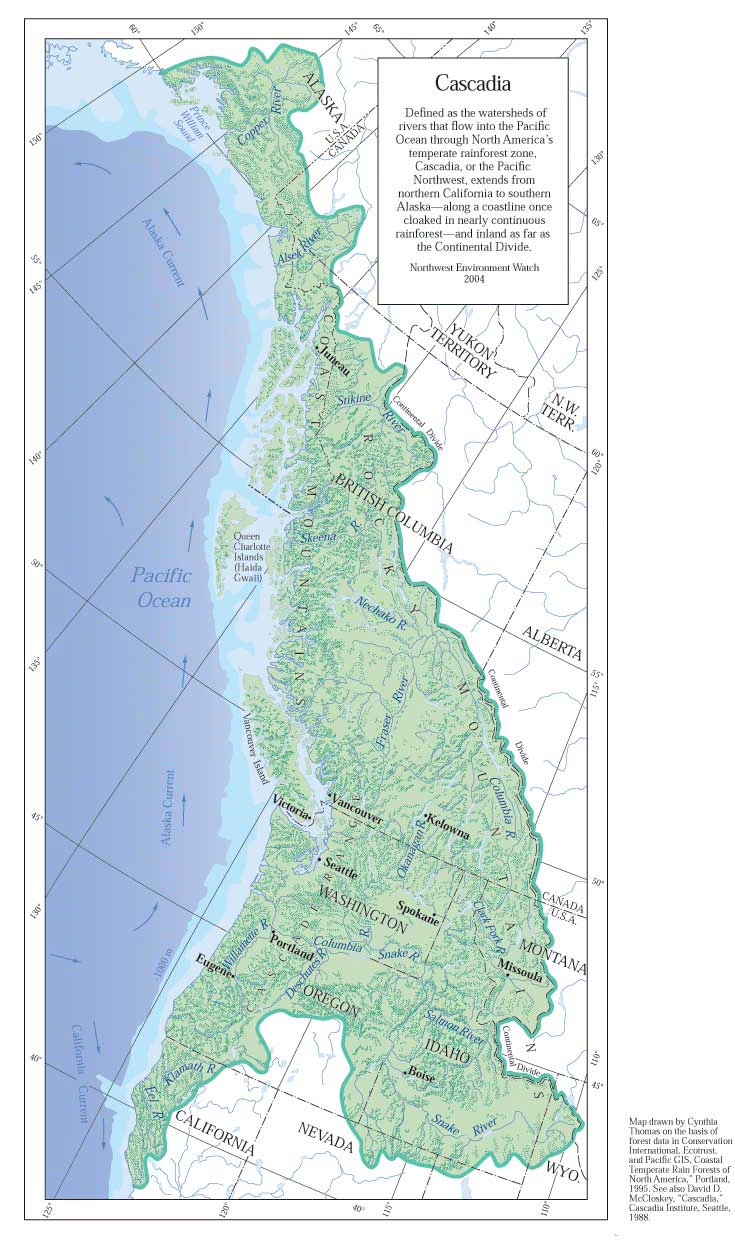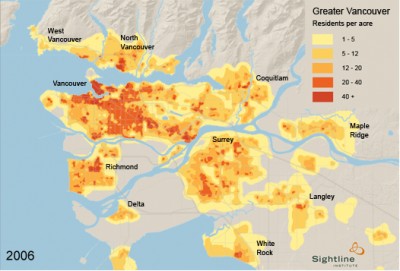 The Sightline Institute has reports and maps on sustainable regional development. They have a Cascadia Scorecard that tracks cities along seven key dimensions:: health, economy, population, energy, sprawl, wildlife, and pollution.
The Sightline Institute has reports and maps on sustainable regional development. They have a Cascadia Scorecard that tracks cities along seven key dimensions:: health, economy, population, energy, sprawl, wildlife, and pollution.
“The Scorecard’s target measurement for sprawl is 64 percent of a metropolitan area’s urban and suburban residents living in transit-friendly, walkable neighborhoods. That was the average for Vancouver, BC, Canada as of 2001 — the most recent data that was available when the Cascadia Scorecard was launched in 2004. Vancouver has the best smart-growth record among Cascadian cities. In fact, it has the most compact urban structure of any of the 19 cities Sightline has analyzed to date.”

Here is a summary of research on British Columbia. I was in Vancouver, BC this past May and I can attest to the fact that it is a very walkable city. One of the things I look at in cities is how geography shapes growth, such as mountains and bodies of water. Steep mountains, Burrard Inlet, and the Fraser River have all played a role in resisting the pressure for widespread sprawl. In the lower mainland area of British Columbia, where Vancouver is, policies are in place to protect farmland and to channel development.
Twitterversion:: @Sightline Institute has great resources for understanding sustainable develment w/studies of #Cascadia. http://url.ie/2jde #ThickCulture @Prof_K
Song:: Atmosphere – Pink Mountaintops {Vancouver, BC, CA}

Comments 1
Patrick Hollingworth — July 13, 2013
Thanks so much for providing individuals with a very special chance to read critical reviews from this web site. It is usually very beneficial plus packed with a lot of fun for me personally and my office mates to visit your web site at the least thrice weekly to find out the latest stuff you have got. Of course, I'm also certainly satisfied considering the powerful tricks you serve. Certain 1 points in this posting are undeniably the most beneficial I've had.